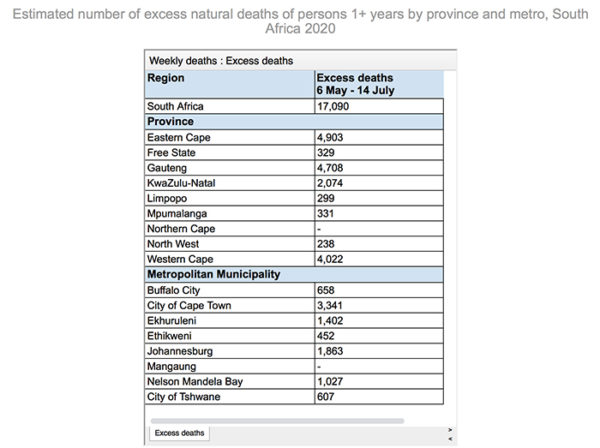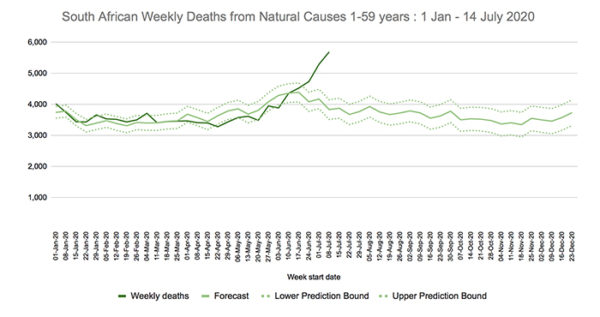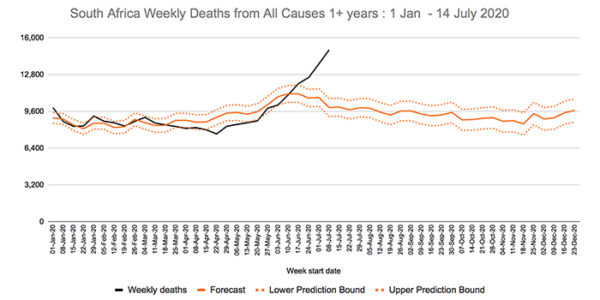A report by The South African Medical Research Council (SAMRC) released on Wednesday revealed a massive 59% spike in natural deaths by the second week of July. This translates to 17 090 more natural deaths in the time period of 6 May to 14 July than historically recorded.

The report is published weekly by the SAMRC’s Burden of Disease Research Unit in collaboration with UCT’s Centre for Actuarial Research (CARe) – which observes trends in South Africa’s health status and tracks cause of diseases which in turn assists in future planning to improve the health of the nation.
In the detailed report – which includes information on natural and unnatural deaths – there has been a “relentless increase” in the second week of July, which was previously noted as the peak of the virus in the Western Cape province.
About 59% more natural deaths were reported in comparison to historical data collected over the years. Tracking weekly deaths is not an uncommon practice for many developed countries, this information assists in understanding patterns like influenza.
Chief Specialist Scientist and a co-author of the Report, Professor Debbie Bradshaw says, the timing and geographic pattern leaves no room to question whether this is associated with the COVID-19 epidemic.
“However, the weekly death reports have revealed a huge discrepancy between the country’s confirmed COVID-19 deaths and number of excess natural deaths,” she said.


The model has effectively been used to confirm that no epidemics occurred before the first case of coronavirus was recorded by the National Institute for Communicable Diseases (NIICD). The report also warned of the early growth of the epidemic in Cape Town and the Western Cape followed by Nelson Mandela Bay and the Eastern Cape.
Surveillance highlighted the rapid decrease in unnatural deaths with the implementation of a hard lockdown, and the return to usual numbers following the lifting of a hard lockdown and the restrictions on alcohol, with a sudden increase in the first week of June.
Since South Africa has a higher unnatural death rate which was curbed when hard lockdown was implemented, SAMRC-UCT focused on the another approach – they began tracking natural deaths. Lockdown showed a downturn of natural deaths initially so the team chose a consistent baseline prior to the uptick in the trend. This clearly detected in the rise of natural deaths over this timeframe.
SAMRC President and CEO, Professor Glenda Gray said, “The SAMRC has been tracking mortality for decades in South Africa, and this system has identified excess deaths associated with the COVID-19 epidemic. These may be attributed to both COVID-19 deaths as well non-COVID-19 due to other diseases such as TB, HIV and non-communicable diseases, as health services are re-orientated to support this health crisis.”
Picture: Pixabay

